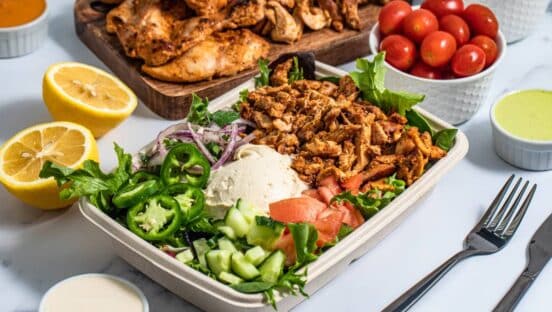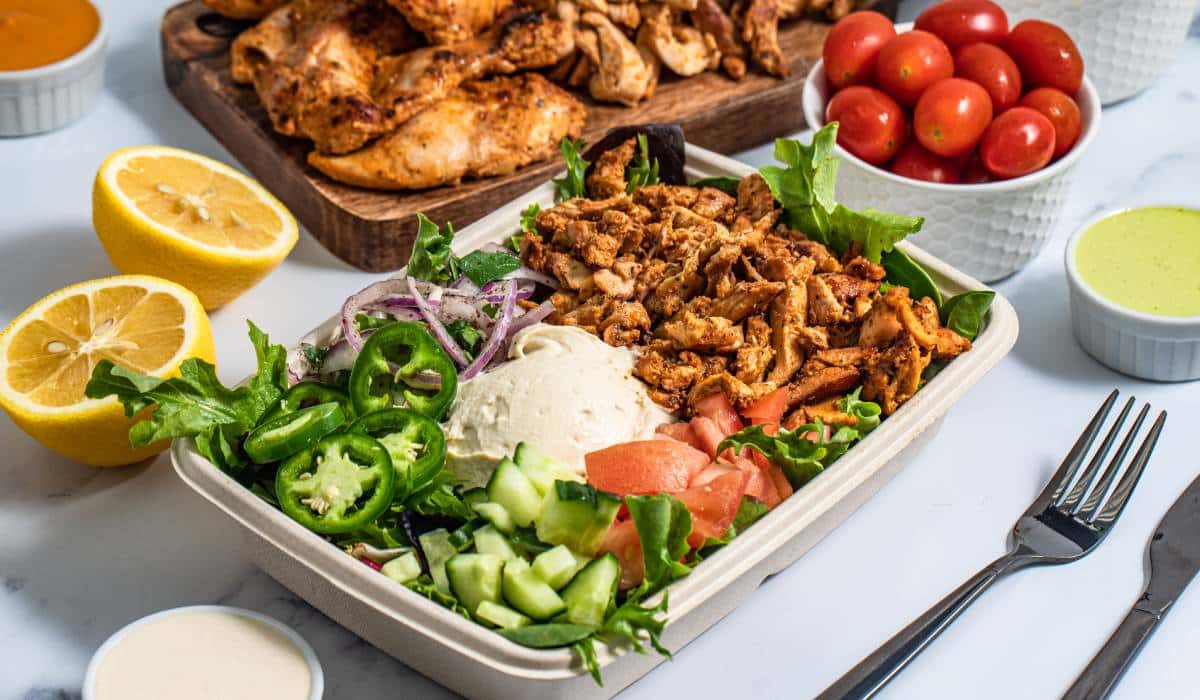Hady Kfoury founded Naya Mezze & Grill in 2008 to create a casual, yet fine-dining restaurant platform for traditional Lebanese and Middle Eastern food. He was inspired by his hospitality management studies at Ecole Hoteliere de Lausanne in Switzerland and work with celebrity chefs Daniel Boulud and Francois Payard.
In his mid-20s at the time, he raised about $700,000 from family and friends to build the first restaurant at 56th Street and 2nd Avenue in Manhattan. Mistakes were made, like running out of cash. The concept’s saving grace was being featured in the New York Times’ Wednesday dining section, which widened its path to success. As of the second week of opening, the restaurant was packed during lunch and dinner.
“In 2007, Middle Eastern restaurants, especially Lebanese restaurants, were poorly showcased,” Kfoury explained. “This is how the idea of building a trendier and more sophisticated restaurant came to mind.”
Although his background was in elevated dining, Kfoury always had a fondness for Chipotle’s assembly line service model. So in 2010, around when fast casual became mainstream, he switched the concept to Naya Express, now known as just Naya. Customers pick a base (roll, bowl, salad, kids meal), add a protein, and add an unlimited number of toppings. There are also salads, cold and hot appetizers, and desserts. Kfoury said the beauty of the menu is that it’s hard to replicate at home. He added, “This is why the rate of customers coming back is pretty high.”
This quick-service iteration has served as the growth engine for the past 14 years.
Through discipline, organic growth, no partners, and no debt, Kfoury built six restaurants. In October 2020, TriSpan announced it obtained a majority stake in the business. Since then, Naya has ballooned to 20 restaurants, including 16 in New York City. Earlier this year, the brand was named to QSR’s 40/40 List, a list of 40 rising fast casuals under 40 stores.
Kfoury believes the chain is capable of reaching around 200 stores nationwide by 2030.
“Yes, it’s a big number,” Kfoury said. “But keep in mind that we quadrupled in size the last few years and we have built so far a model that would get us to this number between our suppliers, our co-packer, our commissary, and our model in general.”
Restaurants are capable of serving roughly 600 customers in one hour among pickup, delivery, and in-store dining (55 percent dine-in and 45 percent off-premises). About 60 to 70 percent of sales come during lunch while the remaining 30 to 40 percent come at dinner.
“We have a reputation in the city that we have extremely long lines,” Kfoury said. “But the good news is that anyone who has been to Naya knows that those lines move pretty fast in our busy locations.”
Naya, which operates in stores ranging from 600 to 1,800 square feet, earns $3.2 million in AUV, $2,100 per square foot on average, and 16.5 percent store level margins. Average net buildout costs are $615,000 and the payback period is fewer than three years. Restaurants have an open kitchen, and in some cases, a completely viewable preparation area. In addition to New York, the company has two units in New Jersey, one in Connecticut, and one in Pennsylvania. Future markets include Boston and Washington, D.C.; there are currently 12 units in the immediate pipeline, six of those being signed leases.
The company debuted six units in 2023, some of which extended into bedroom communities of the tri-state area. It expects to open 12 locations in 2024—which would be its largest development year on record.
Productive sales are backed by a store level turnover rate under 50 percent and a corporate level turnover rate of 30 percent. Naya often promotes from within, which Kfoury said creates “a great culture internally.”
“We profit from lower hiring costs, uninterrupted productivity, and reduced employee turnover. Why? employees benefit from high company morale, professionalism, validation, and a culture of upward mobility,” he said.
Kfoury referred to Naya as the “right concept at the right time” because of the growing popularity of Middle Eastern and Mediterranean food. The latter has been ranked as the No. 1 diet seven years in a row by U.S. News & World Report.
Datassential reported in 2020 that hummus was up 17 percent on menus in the past four years and that falafel was up 27 percent. These trends are a big reason why Naya returned to pre-pandemic sales by September 2021.
“Nowadays, you would find Middle Eastern goods pretty much everywhere from Whole Foods and Trader Joe’s—tahini, mixed spices, pomegranate molasses, toum garlic … Even at Trader Joe’s, you could find kibbe. Kibbe is a very traditional Middle Eastern beef dumpling, which is on our secret menu. We just serve it for pick up or delivery or on our app,” Kfoury said.








